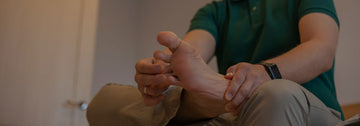Relieve Claw Toes with Effective Exercises: A Comprehensive Guide


Posted by:
Johannes Sauer
Reviewed by:
Updated at: September 05, 2024
CHECK OUT THE LATEST IN ADAPTIVE FOOTWEAR...
FAQ
What are claw toes and why do they occur?
Can physical therapy exercises help relieve claw toes?
How does a stroke contribute to the development of claw toes?
What roles do cerebral palsy, nerve damage, and spinal cord tumors play in causing claw toes?
What are the common symptoms of claw toes?
Can claw toes be treated without surgery?
How do massage and mobilization techniques benefit individuals with claw toes?
What are some footwear tips for managing claw toes?





![[color: black] Original Men's Adaptive Shoe](http://cadense.com/cdn/shop/files/Mens-BLK-T1-LG.jpg?crop=center&height=300&v=1765338442&width=300)
![[color: white] Original Women's Adaptive Shoe](http://cadense.com/cdn/shop/files/Womens-WHT-T1-LG.jpg?crop=center&height=300&v=1765381322&width=300)





